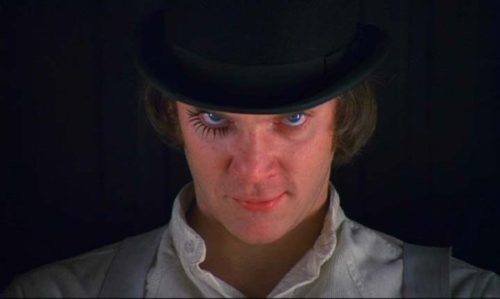
Unlike most of the conditions in this book, Conduct Disorder (CD) is only diagnosed in children and adolescents. As the name implies, people who get diagnosed with it conduct themselves in ways that the clinician considers disorderly, in particular when it comes to respecting the rights of other people. This article looks at how to write believable and interesting characters with the condition.
The most important thing is to distinguish CD from Antisocial Personality Disorder. CD is the developmental precursor to Antisocial Personality Disorder – it can only be diagnosed in those too young to have a diagnosis of Antisocial Personality Disorder (i.e. 18 years of age). It is therefore a developmental condition.
One of the key symptoms of CD is a lower level of fear. This will express itself in a wide variety of ways.
The most notable way that a lower level of fear expresses itself in young people is when it comes to transgressions. A young person has not yet had time to internalise knowledge about the effects that their actions have on other people. They therefore have to learn to be afraid of punishment. This corresponds to Level 1 of Kohlberg’s Scale of Moral Reasoning.
A young person with CD will have a hard time internalising rules about those transgressions, in part because they don’t feel much fear, and so don’t have as much inhibition when primitive impulses towards violence and destruction start playing up on them. Because of this, they regularly violate boundaries relating to other people’s personal space and property.
Another way low levels of fear find expression is in transgressions against one’s own health. Young people already play fast and loose with their health when it comes to having a good time; young people with Conduct Disorder are nihilistically reckless. If the protagonist of your story has Conduct Disorder, chances are that they will be into the booze, weed and pills from their early teenage years.
A character with CD will likely be something of a daredevil. If they are male, they might find themselves drawn to racing motor vehicles or street fighting; if female, to shoplifting and starting trouble between men.
A story with a protagonist who has Conduct Disorder might read like J. D. Salinger’s Catcher in the Rye. Care must be taken here, therefore, not to sound cliched. Anti-hero stories mostly appeal to the same young audience, because they will most readily identify with the spirit of rebellion expressed by such a character. People with Conduct Disorder push the boundaries, for good or ill.
Punk stories, in particular cyberpunk, often feature protagonists who would appear (at least from the authorities’ perspective) to have Conduct Disorder. Young men like John Case of Neuromancer or Jonty Gillespie of The Verity Key are unrepentant criminals, usually because they have to be in order to make a living in the cracks of the edifice of respectable society.
After all, one man’s Conduct Disorder is another man’s righteous rebellion against a tyrannical oppressor. So a character with the condition might be the perfect choice of protagonist if your story involves going up against a large, faceless, totalitarian entity. After all, most of us have a point which, if pushed beyond, we will no longer behave in a co-operative manner.
If a character with CD is pitted against a malicious, evil entity (corporation or government), much of the difficulty in writing your story will come from making that entity unsympathetic enough that the reader readily comes to identify with that character. The more credibly this can be done, the less that character will look like a CD sufferer and more like a righteous hardarse.
Unsurprisingly, Conduct Disorder is highly correlated with all forms of early childhood abuse. A character with the condition might have learned by way of mimicry of their parents that violence and cruelty are perfectly acceptable ways to advance one’s interests, and that fear is for the weak and an invitation to be destroyed.
So if you are writing a character with CD they might not necessarily be a cool, daring and adventurous antihero. Realistically they are more likely to be somewhat brutal. If your protagonist encounters such a character, they might find them intimidating – the class bully, or local street thug.
If your protagonist encounters a character with CD, they could respond in a wide variety of ways, depending on how they themselves are (and their decision will be very revealing to the reader). They might consider that character a cool rebel to be befriended, they might consider them a danger to be avoided, or they might consider them a little brat to be corrected.
Conduct Disorder often occurs at the same time as Attention Deficit Disorder. It’s likely, therefore, that any character with it will have extreme difficulty at school, at work, or with either friends of family. Their life will probably be very chaotic, and will considerable Police or social worker involvement.
*
This article is an excerpt from Writing With The DSM (Writing With Psychology Book 5), edited by Vince McLeod and due for release by VJM Publishing in the summer of 2018/19.
